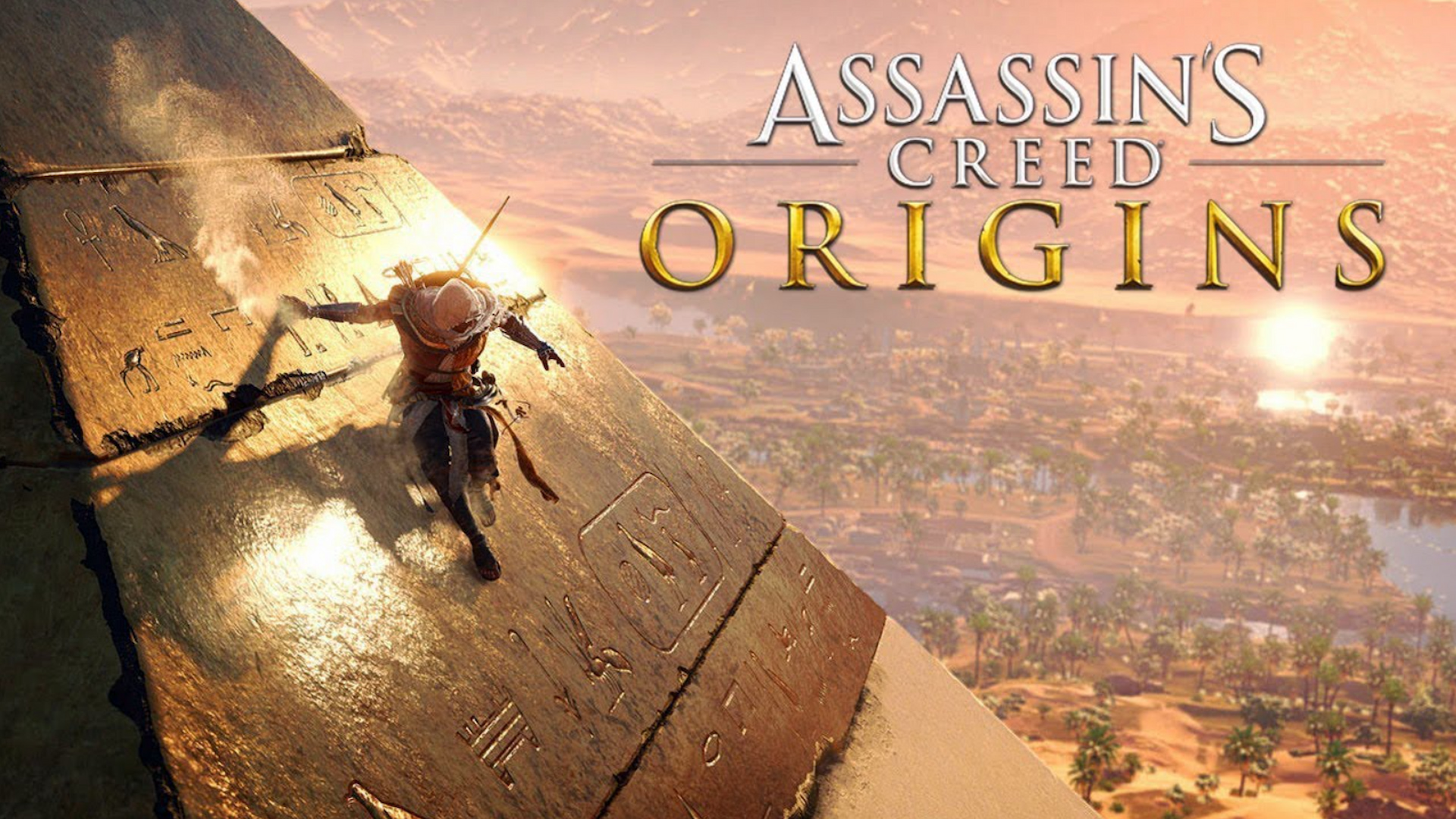Assassin’s Creed Origins marked the beginning of a bold new era for the series. The combat was overhauled with heavy weapons like axes and spears encouraging a brute force playstyle emphasizing blocking and countering. Experience points and skill trees further cemented the game as an action RPG hybrid. Origins also marks the debut of the Discovery Tour mode. Assassin’s Creed Origins was a true nexus point for the series, hosting the largest amount of new features an AC game has ever had. While future games would go on to abuse the RPG mechanics Origins introduced, Origins itself executed these mechanics in a way that respected the player’s time. Let’s go on a discovery tour of our own as we explore what made Assassin’s Creed Origins so good.
Assassin’s Creed entries are perhaps most identifiable by their respective settings, so we’ll start there first. AC Origins is set in Egypt just before the turn of the first Century. Alexandria was still the trade capital of the world, and known figures were reigning, making this a ripe time and place for an AC game. Before Exploring Origins’ depiction of Egpyt itself though, let’s reminisce on the brilliant traversal used to get from point A to point B.
Just like many open world games, you have a mount to travel long distances with. Except with Origins, you get a wide variety of mount types, from camels to unicorns and even … a chocobo?!? Yes, you can ride a chocobo in AC Origins. The mount controls feel natural and intuitive with automatic movement in the direction you aim, freeing you up to examine the environment and initiate mounted combat. Camels are best suited for combat while horses have better stamina and speed for long-distance journeys. Like Breath of the Wild, the mount seeks roads automatically without the game fighting your control away. Of course, the main character Bayek is no slouch himself, with a tight turn radius and snappy run-and-jump controls that feel breezy.
Exploring Egypt in Assassin’s Creed Origins is a sublime treat, not only because of the intuitive and snappy controls, but the environments. AC Origins may have the most beautifully diverse environment out of all the games in the storied franchise to date. There’s the obvious deserts and pyramids you’d expect from the Egyptian setting, and they’re recreated with stunning realism in AC Origins. But then, there’s the Nile River and its surrounding swamps and jungles, which are filled to the gills with crocodiles and other native species. The density of animals and how they’re portrayed is brilliant in AC Origins. Flocks of flamingos scatter away realistically as you approach them, and vultures characteristically circle their prey. Seriously, this is the Assassin’s Creed game to experience if you want diverse African wildlife; it’s got it in spades. Heck, you can even tame the wildlife, using lions and hippos to temporarily fight for you; how fricken’ cool is that?
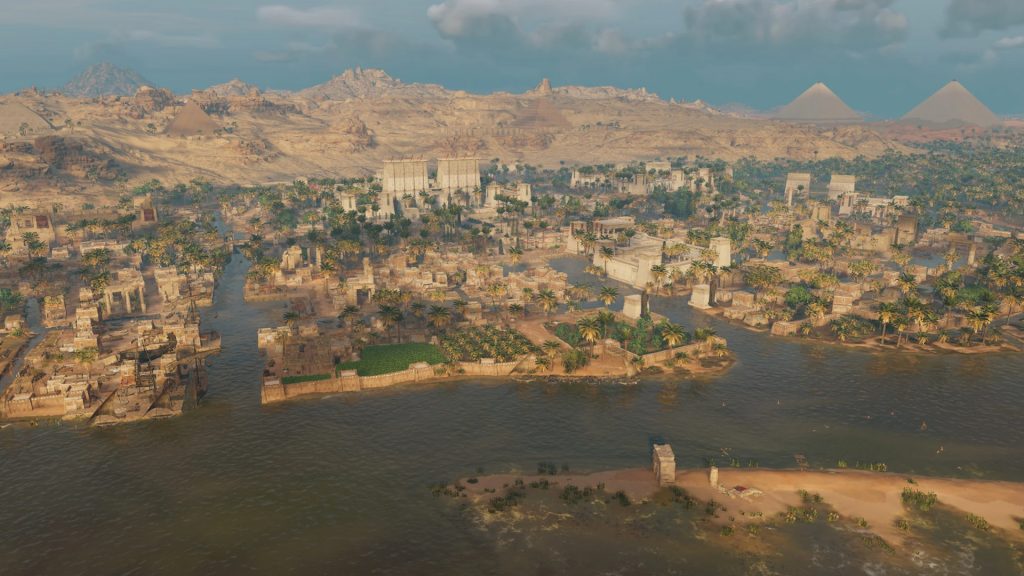
The cities of Thebes, Memphis, and Alexandria are no less jaw-dropping than the surrounding wildlife. AC Origins retains that classic density that the series is known for as you brush dense crowds aside on your way to a tall building begging to be lept off of. The realization of Egypt was so well executed in Origins that a Discovery tour mode was added serving as a guided tour of various key locations detailing their potential stories. Discovery Tour is a master class on how you do interactive learning. This mode lets you control a wide selection of NPCs as you walk through the locations and listen to narrations in a safe environment. Entries can be re-read in the archives. Discovery Tour would later be used for AC Odyssey and AC Vahalla.
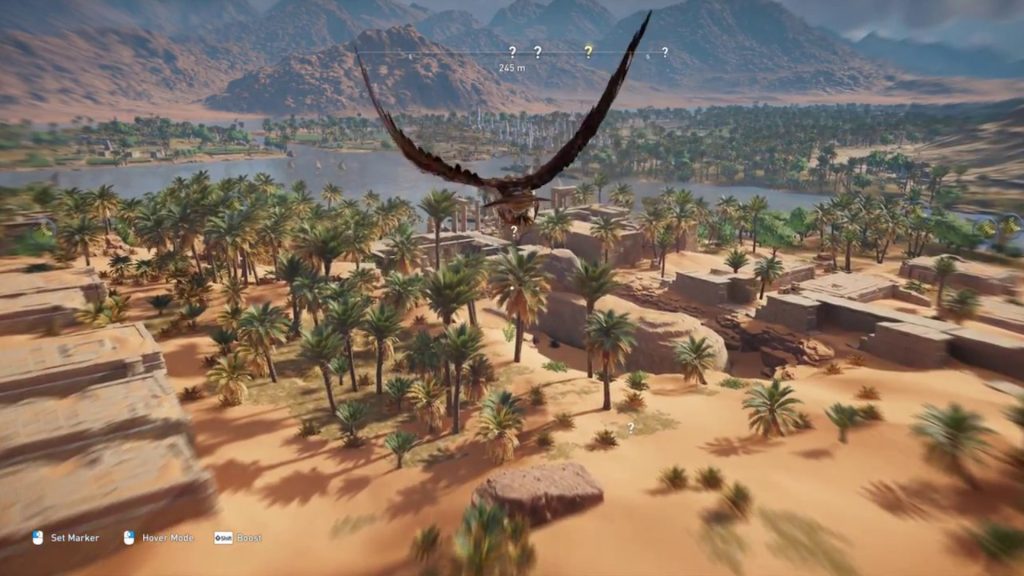
And then there’s the thing that made AC Origins really stand out from previous entries: the eagle. You use your eagle friend, Senu, for aerial reconnaissance in AC Origins. When I first saw this mechanic being shown off in previews, I thought it would make the game too easy, essentially giving us even more superhuman abilities as an assassin, but the execution works out splendidly. As you return to Bayek’s perspective, you see enemy outlines and routes through buildings and obstacles. The top-down ‘preview’ of the terrain, via your eagle, provides an element of memorization and strategy that past games in the series didn’t quite have. The extra reconnaissance tools at your disposal in Origins are similar to the high-tech gadgetry available to you in games like Splinter Cell or Deus Ex. You can pre-plan assassinations and ambushes using the eagle’s lay of the land in a more comprehensive way than ever before, making you feel like a tactical mastermind. Far from destroying the sense of difficulty, this literal eagle vision is balanced well with the more involved action combat that Origins introduced.
Bayek is something of a Renaissance man when it comes to combat style. There are four types of bows, from the shotgun-style Warrior Bows to the long-range Predator Bow, and there’s an even wider variety of melee weapons. The DPS stat is the most reliable way to tell how good a weapon is, but there’s many other parameters like reach and status ailments that you want to keep an eye on too. It’s a blast to create your own unique build in Assassin’s Creed Origins, something you could never do until this entry in the series. Want to be a close-range shotgunner with a long spear for range attacks? Or, does a sniper with duel swords sound more pleasing to you? You can also ignore builds entirely and just focus on skilled shield blocking and parrying to get through the game; the choice is yours.
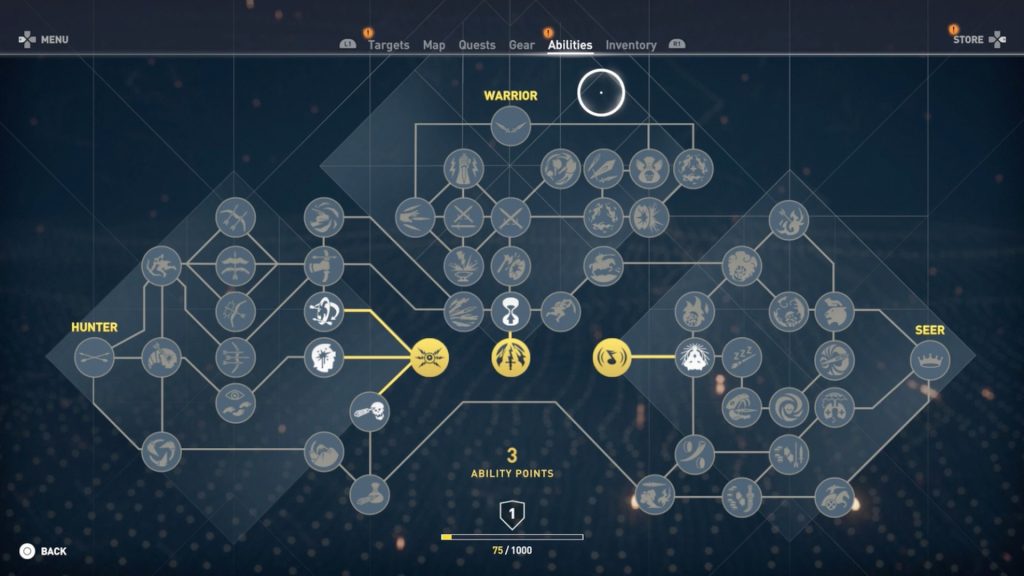
While AC Origins wasn’t technically the first game in the series to have a skill tree, it is the first to fully flesh the skill tree out among its various weapon categories. Unity and Syndicate gave you skill points as you progressed the main story, but Origins followed a more traditional action game approach with skill points being rewarded based on experience gain. The RPG-ification of the series really started with Origins, for good and ill; and Origins did it best with its wide selection of weapon styles, balanced experience point gain, and fleshed-out skill tree.
Of course, you can still opt to play a pure assassin in AC Origins, only striking from the shadows with your hidden blade using Senu for reconnaissance. I had the most fun combat-wise when using Senu’s intel to devise stealth routes as I took out unsuspecting enemies and exited the scene undetected. But you can just as well go guns blazing as a bersker without any stealth whatsoever if you so wish. Origins balanced old-school stealth and action combat well, remaining unrivaled in its fusion of styles to this day.
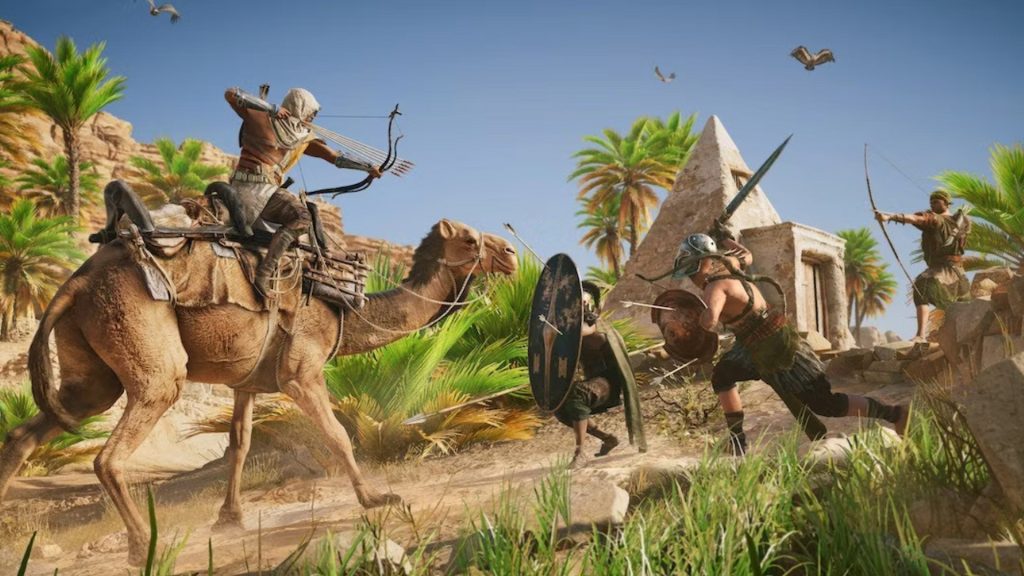
Assassin’s Creed Origins exists as the true nexus point for the series, retaining much of what made the genre so loved (stealth) while injecting action RPG mechanics that the series would go on to live by. The next entry would abuse the existence of experience points and upgradable stats by aggressively gating content behind a heavy grind wall, clearly pressuring players to either pay for levels or grind side content. This stat-gating would continue with Assassin’s Creed Valhalla, with some major difficulty curves mandating further exploration of the map and/or purchase of level-up DLC. But Origins hit a good balance with a smooth experience rate and a campaign that wasn’t gated by artificially padded enemies. Assassin’s Creed Origins hit the sweet spot between stealth and action RPG elements really well, and we’re hoping the series returns back to this brilliant balance of styles with the upcoming Assassin’s Creed Shadows.
Note: The views expressed in this article are those of the author and do not necessarily represent the views of, and should not be attributed to, GamingBolt as an organization.
